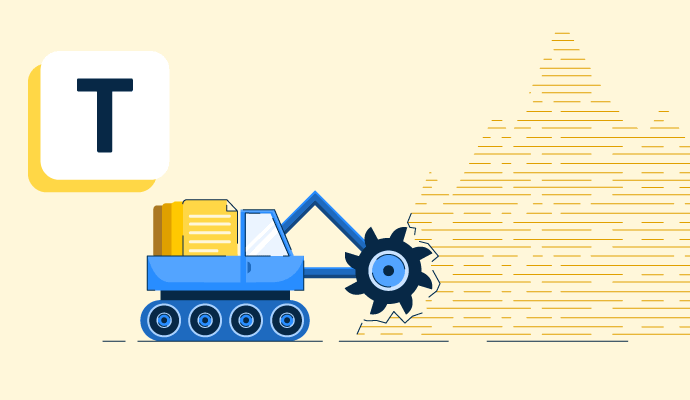What is text mining?
Text mining is the process of turning unstructured text into structured data to facilitate its analysis. Also known as text data mining or text analytics, the process involves using analytical techniques and algorithms to uncover themes and patterns in the data.
With the help of machine learning and natural language processing (NLP), text mining uncovers valuable insights in large volumes of text, like emails, customer feedback, and social media posts. Organizations use this information to drive their decision making.
Text analysis software allows users to import text from various sources, extract insights, and create data visualizations to share with team members. This type of software complements other tools in an organization’s data stack, such as business intelligence (BI) platforms.
Text mining techniques
Users select appropriate text mining techniques based on their objectives or target outcomes. Common techniques include:
- Information extraction (IE) lets users automatically find and extract relevant structured data from unstructured text and store them in a database. For example, an analyst might identify the names of specific people or dates from the text.
- Information retrieval (IR) involves retrieving specific information from text documents based on user queries. Many search engines rely on IR, which uses algorithms to find the requested data.
- Natural language processing (NLP) applies computational techniques to make sense of human language. Common tasks used in NLP include sentiment analysis, which involves identifying emotional tone in language, and syntax analysis, which gauges a text’s meaning based on sentence structure and grammatical rules.
Text mining applications
Many industries use text mining to draw actionable insights from text-based documents and websites. Common use cases include:
- Social listening: Social media monitoring tools use text mining to understand consumers’ opinions and track sentiment trends. They also help companies manage their online reputation by locating complaints that need a response.
- Customer relationship management: Mining diverse sources of customer feedback, from chatbot input to survey responses, helps companies identify areas for growth and ways to increase delight. With this data, they can create more personalized experiences and boost customer loyalty.
- Competitor and market analysis: With text mining, companies can extract data from financial reports and news articles to monitor market trends and competitors’ actions. Plus, they can analyze similar companies’ reviews to determine what buyers like or dislike about their products and services. Then, they can use this information to better position their offerings.
Basic process of text mining
The steps involved in text mining may vary depending on an organization’s goals and existing software. In general, the process typically has four steps:
- Gather data: The analyst gathers a large volume of data from both internal and external sources. Internal text-based data sources include product feedback surveys or customer support emails, and external sources include social media posts, news articles, and forum discussions.
- Prepare and process data: Once the analyst imports the data, the text analysis software runs automated processes that clean it up and convert it into structured data. The analyst removes redundancies and applies tokenization, which splits the text into words or phrases. At this stage, they also remove punctuation and meaningless “stop words,” such as and, the, and under.
- Conduct text analysis: The analyst then applies various techniques and methods to uncover patterns, themes, or sentiments in the structured text data. This step involves using algorithms or models to make sense of the data.
- Interpret and share the results: The analyst reviews the results and determines the next steps. For example, they may share sentiment insights from a social media analysis with the marketing team or social media manager.
Benefits of text mining
Organizations use text mining for richer qualitative data or non-numeric, descriptive insights. Text mining helps companies:
- Make more informed decisions: With text mining, organizations can identify patterns and trends in the text to drive their decision-making process. For example, by mining review sites and social media, they might see that customers have become increasingly frustrated with a popular product. Then, they could make updates to the product to improve customer satisfaction.
- Save time and effort: Businesses have large volumes of textual information to analyze, and the amount of textual data grows with every email and customer support log. Text analysis software reduces the number of employees and hours needed to glean meaningful insights.
- Expand knowledge of customers: Successful businesses rely on a deep understanding of customers to inform all aspects of their work, from marketing campaigns to product design to customer experience. Using text mining, they better understand customer opinions and preferences to make steps toward continuous improvement.
Deep dive into text mining to learn more about the process, its benefits, and popular software solutions.

Kelly Fiorini
Kelly Fiorini is a freelance writer for G2. After ten years as a teacher, Kelly now creates content for mostly B2B SaaS clients. In her free time, she’s usually reading, spilling coffee, walking her dogs, and trying to keep her plants alive. Kelly received her Bachelor of Arts in English from the University of Notre Dame and her Master of Arts in Teaching from the University of Louisville.


















